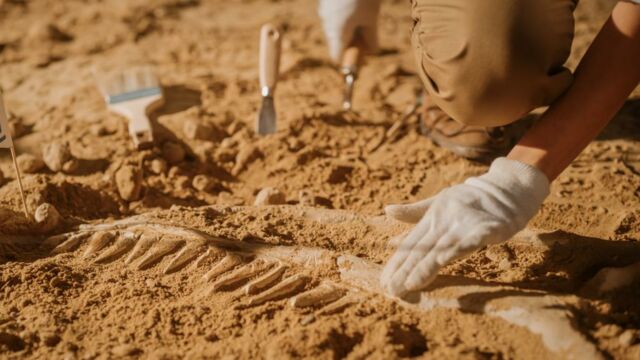In 2013, a stunning discovery by two cavers exploring the Rising Star cave system near Johannesburg would change how we look at the evolution of human beings. According to National Geographic, the remains of the extinct species of humans which was found in those caves dated between 236,000 and 335,000 years old.
Discover our latest podcast
The expedition was led by Dr. Lee Berger, a paleoanthropologist based in South Africa, and the species was named Homo naledi by the researchers.
The site ended up becoming a crucial spot where between November 2013 to March 2014, over 1550 specimens from at least 15 Homo naledi individuals were recovered and this became the largest collection of a single hominin species found in South Africa.

The discovery of Homo naledi
As per Express, speaking in the Smithsonian Channel’s documentary, ‘The Life of Earth: The Age of Humans,’ Dr. Berger is quoted as saying,
I had this map I created of almost 800 cave sites that were all entryways into the underworld that I hadn’t been in yet — and that was the mission.
There I saw something I thought I would never see in my entire career, there was a clearly primitive hominid just lying there on the surface in the dirt.
The discovery left the researcher completely ‘speechless,’ while it challenged prior ideas about human evolution.

The significance of the discovery
The Homo naledi were about 4 ft 9 in (1.44m) in height and their weight estimates range from 88 – 123lbs (39.7 – 55.8kg). They had small head, narrow shoulders and ape-like features.
The discovery challenges the linear narrative of evolution that suggests that man evolved from apes in a linear way. The find in fact suggests that our evolutionary tree branches out in different directions since the Homo naledi were the contemporaries of the modern human.
Science Daily quotes Dr. Berger as saying,
Homo naledi remains one of the most enigmatic ancient human relatives ever discovered.
It is clearly a primitive species, existing at a time when previously we thought only modern humans were in Africa.
Its very presence at that time and in this place complexifies our understanding of who did what first concerning the invention of complex stone tool cultures and even ritual practices
Sources used:
Human Origins: ‘Homo naledi’
Science Daily: ‘Partial skull of a child of Homo naledi: Insight into stages of life of remarkable species’
National Geographic: ‘ Did This Mysterious Ape-Human Once Live Alongside Our Ancestors?’
Express: ‘'I was speechless'—Caver recalls historic moment discovering new species of human’















